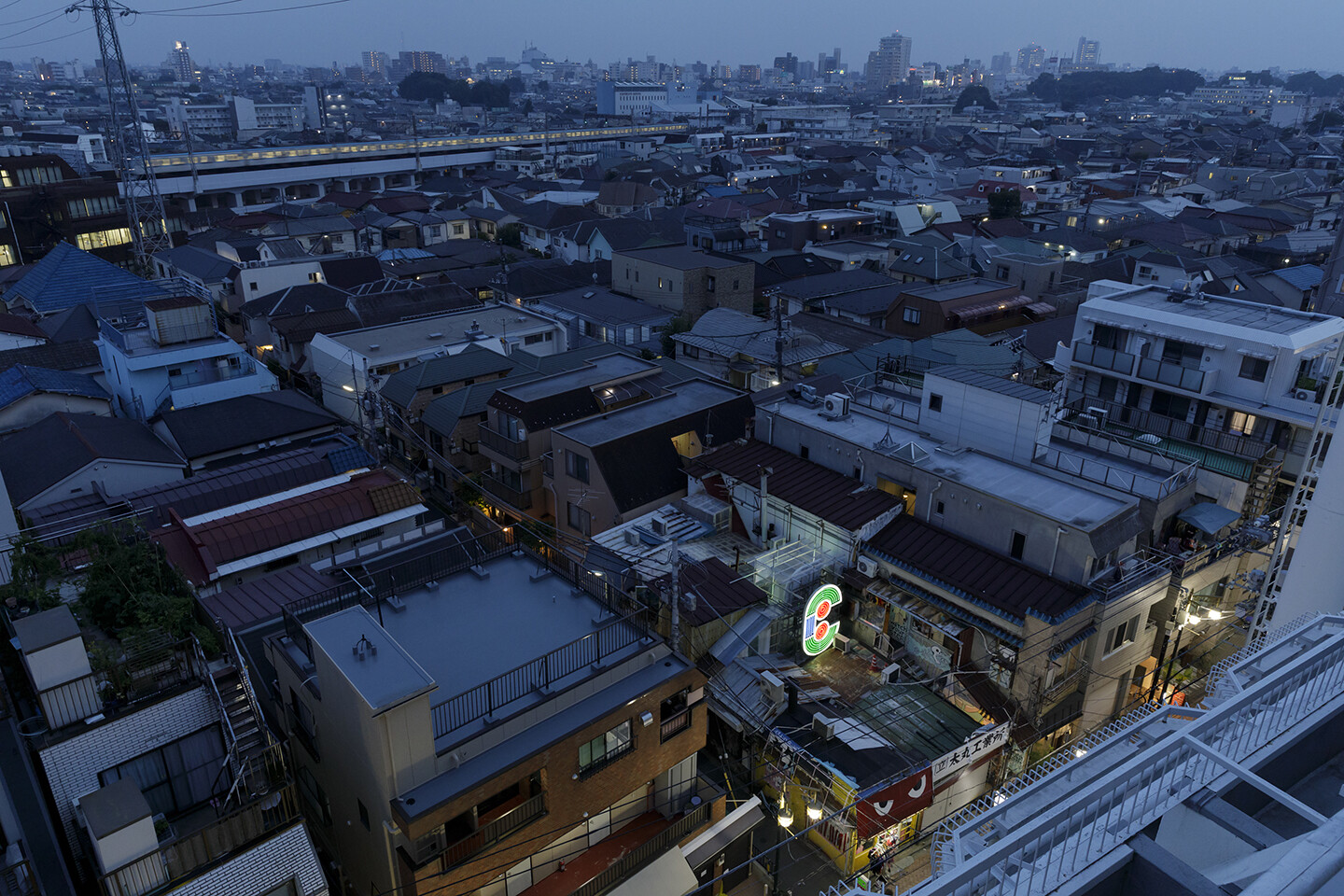On March 11, 2011, the triple meltdown of nuclear reactors at Tokyo Electric’s Fukushima Daiichi Nuclear Power Station set off a literal and metaphorical shockwave that caused major shifts around the world—economic, political, and cultural. Germany, for one example, moved to permanently shutter all nuclear plants, canceling pending nuclear infrastructure projects while accelerating a turn toward renewable energy.1 Coming in the wake of the 2008 financial meltdown, which sparked revolutions in the Middle East, the Occupy movement, as well as uprisings across Asia, the Fukushima meltdown destabilized the established economic and political order in Japan. However, what would become the largest social movement in Japan since the 1960s, a protest movement involving hundreds of thousands of people, did not begin in front of the seat of government or Tokyo Electric’s headquarters. Instead, its earliest expressions were cultivated in a small neighborhood in western Tokyo called Koenji.
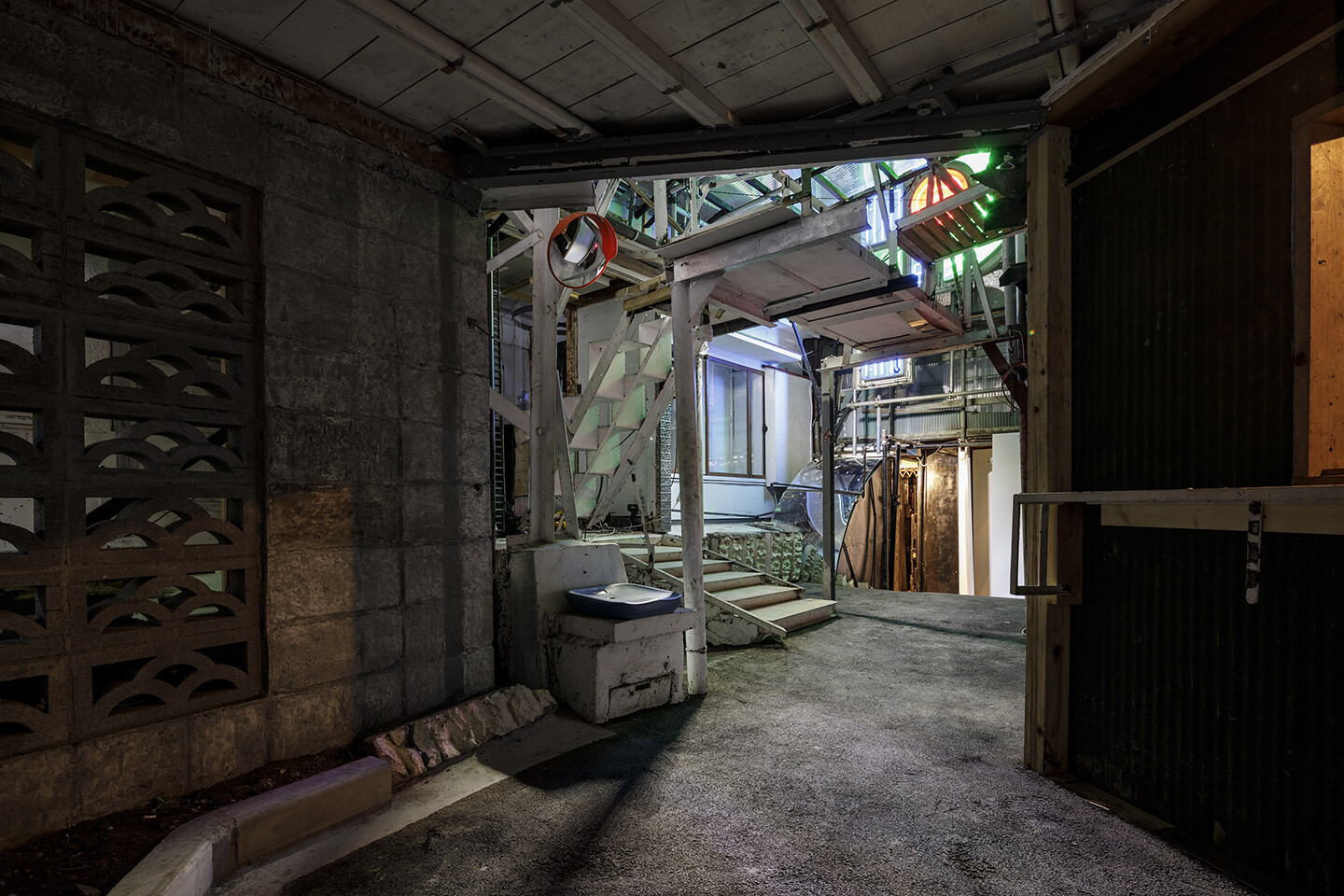

Chim↑Pom from Smappa!Group made a public street through their studio in Koenji in 2017. Photo by Kenji Morita. Courtesy of Chim↑Pom from Smappa!Group.
The instigator of this gathering that grew into a vast social movement was a loose, autonomous cultural collective called Amateur Riot (Shiroto no Ran) composed of artists, musicians, and other precarious cultural workers. Commentary on the mass social movement that the group spurred—as well as its successes, shortcomings, and generational impacts—often omits the important local dynamics in Koenji which laid the groundwork. Shifting the focus to the smaller scale reveals the long-term work of Amateur Riot in contesting the durational crisis of neoliberalism that had profound effects on already precarious youth, and that created some of the foundational connections for it to grow.2 To counter the cultural and economic neoliberal shift towards precaritization, Amateur Riot has worked for almost two decades to reestablish local agency and to foster forms of interdependence for collective social reproduction, creating what I call, following the writings of political theorist James C. Scott, a “para-zomia”—a self-organized community embedded within an urban area.
Though Amateur Riot includes artists and cultural workers, the collective does not consider itself a producer of artworks, signaling a move on its part past what is usually considered art. My interest is not in how Amateur Riot labels its actions, but rather how a collective practice developed an infrastructure capable of materially addressing the precarious conditions affecting artists and other cultural workers, and how the collective’s interventions in public created the possibility for gatherings, cultural activities, and finally mass protests.
Amateur Riot
Amateur Riot was formed in 2005 by activist Matsumoto Hajime, artist and designer Yamashita Hikaru, hip-hop critic Shin Futatsugi, and others.3 Before forming the collective, Hajime and Hikaru sold second-hand items and clothes to make a living. Following this model, the group first opened an eponymous shop together, called Shiroto no Ran 1 Gouten (Amateur Riot No.1), in the working-class Tokyo neighborhood of Koenji. Through the operation of this shop, Amateur Riot developed into a loose collective: a bric-a-brac of artists, musicians, cultural workers, and friends all centered in the neighborhood, organizing local film screenings, dance and music performances, and even an English class called Amateur Riot University.4 Besides organizing cultural events in their space, the group eventually intervened into their local environment further by organizing an infrastructure of resale shops, bars, an art gallery, a radio station, and a guesthouse, forming a dense mesh for practicing cultural activities, knowledge-sharing, and collective social reproduction. As part of this mutual aid network, the group shared its experiences on how to find second-hand clothes and items to refurbish and sell, thus enabling others to open their own resale shops. Friends opened their own stores in the area, utilizing the Amateur Riot name, adding consecutive numbers as they were established: Shiroto no Ran Shop No. 2, Shiroto no Ran Shop No. 3, and so on. The stores were not a chain or franchise; they were all independently owned and run.5 Thus, sharing the practice and know-how of recycling and reselling electronics, household items, and clothes became an open-source tool that spread throughout the community as a means of supporting both those in Amateur Riot and their friends.
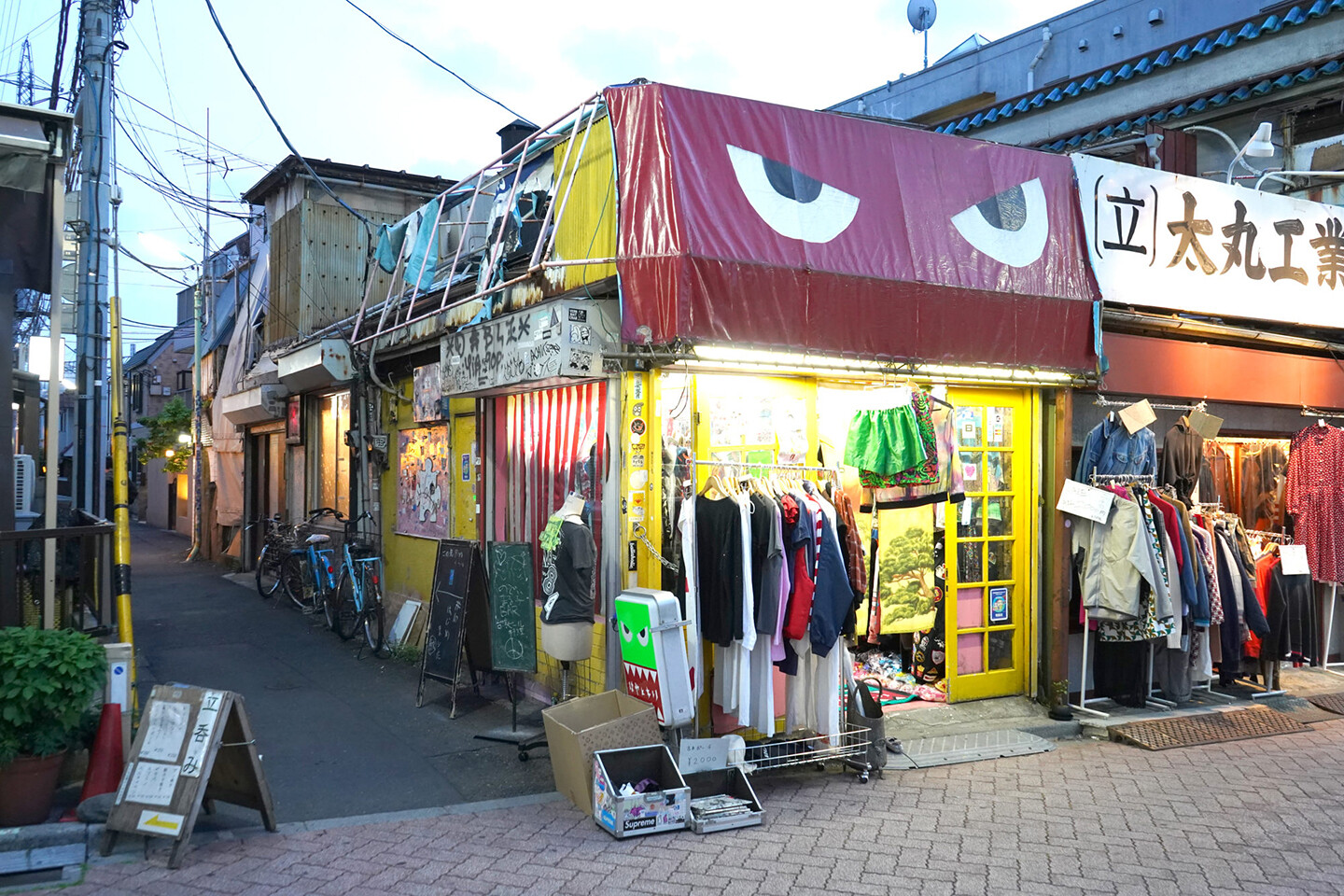

Clothing store affiliated with Shiroto no Ran, located in the Koenji neighborhood of Tokyo. Photo: Kyun-Chome.
To complicate any definitive characterization of the collective, the composition of Amateur Riot is not entirely clear even to its founders.6 People come in and out of the group. The name functions as a kind of open commons and floating signifier which can be claimed by anyone. The stores functioned in different ways, serving as meeting places and as nodes for organizing protests, performances, and interventions. Thus, the infrastructure of the store as a shelter and gathering place, along with its physical tools, including phones, computers, toilets, and kitchens, could be repurposed for multiple and overlapping activities, including planning events and demonstrations. This is evident in the 2011 film Radioactivist, an independent documentary following the group after the Fukushima meltdown, which depicts Hajime fielding calls while organizing an upcoming protest on his shop’s phone, and other scenes showing different organizers using the space for banner-making, communal meals, and meetings.7 This shows that the site of work for Amateur Riot can be a means of subsistence while also being bound up with other forms of the (re)production of everyday life.
While these multiple modes of life are integrated through the spaces and collective work they allow, they can also be in tension. As Hajime notes, “My greatest anxiety now is how to maintain the balance between the shop’s function as a mainspring of my and the staff’s living, and its function as a base of riots and commotion.”8 This concern highlights how the contradictions of fulfilling labor and social reproduction under capitalism cause stress when space is created to allow for a greater freedom to undertake a multiplicity of other activities. Emphasized by Hajime, the goal of the store is not accumulation, but rather the fostering of a fertile, diverse ecology where those experiencing economic precarity and social exclusion can flourish with little means. The activities and alternative infrastructure can be seen as part of an experimental attempt to construct a postcapitalist, prefigurative set of practices that aim to develop ways of living outside of neoliberalism in the present.9
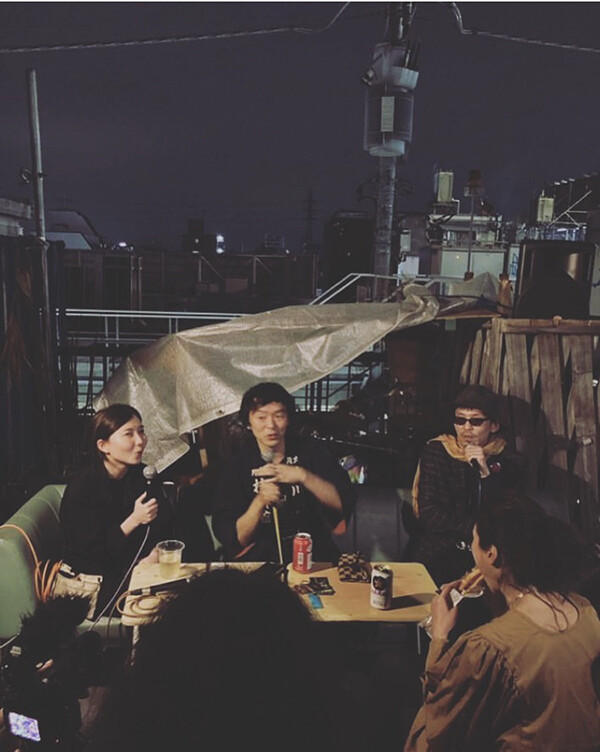

Amateur Riot Radio (Hajime Matsumoto, Ruquitwora Matsumoto, Kaho Ikeda) broadcasting after the SAVE KOENJI protest to counter large-scale development in the area. Image courtesy of Amateur Riot Radio.
Para-zomia
Amateur Riot built a broader prefigurative infrastructure in the neighborhood to create the conditions for cooperation and collective formation. In this prefigurative infrastructure in Koenji, Amateur Riot spatialized a nourishing ecology where a community could survive as well as express itself through various cultural outlets. In contrast to moving to the countryside to build a new society in a perceived “terra nullius” (as back-to-the-land movements propose), in Koenji there was a desire to be together in urban space.
The concept of “zomia” can be useful in understanding the practice of Amateur Riot in the broader context of Asia. The word “zomia,” common across the Chin/Kuki/Mizo language groups in parts of Myanmar, Bangladesh, and elsewhere in Southeast Asia, means “remote peoples” or “hill people.” The term was used by the historian Willem van Schendel to name (“Zomia”) the highlands that form a largely contiguous transnational area ranging from southeast China down to Vietnam and across to eastern India.10 Van Schendel’s focus on Zomia aimed to complicate the disjointed, geography-based academic disciplines that this area traverses (South Asia, Central Asia, East Asia, and Southeast Asia) and to examine the Cold War dynamics that kept the area out of the limelight. The political and social dimensions of Zomia, and the way its residents have used its mountainous terrain to evade the effects of colonization, was later explored by anthropologist James C. Scott in his landmark book The Art of Not Being Governed: An Anarchist History of Upland Southeast Asia. Scott describes the area as a “riotous heterogeneity” of Indigenous people and historic and contemporary refugees.11 Due to the difficult terrain, this vast region has little state presence—a common condition that connects populations that are otherwise diverse in their languages, customs, ethnicities, and types of societies. In the absence of state control, writes Scott, self-governance has bloomed. Unlike Hakim Bey’s Temporary Autonomous Zones, Zomia is an enduring, uneasy topography where diverse means of self-organization have flourished, from Indigenous governance and revolutionary movements to composite communities that evolve their own ways of being together.12 Invoking Zomia here is not intended to idealize the difficult conditions faced by its highlands communities, but rather to (1) highlight the shared environmental and topological conditions that shape culture; and to (2) posit a common non-state orientation across East and Southeast Asia. Scott proposes an environmental reading of the shared conditions of Zomia to explain why communities with diverse languages, cultures, and histories have nonetheless tended toward a common way of life: self-government.
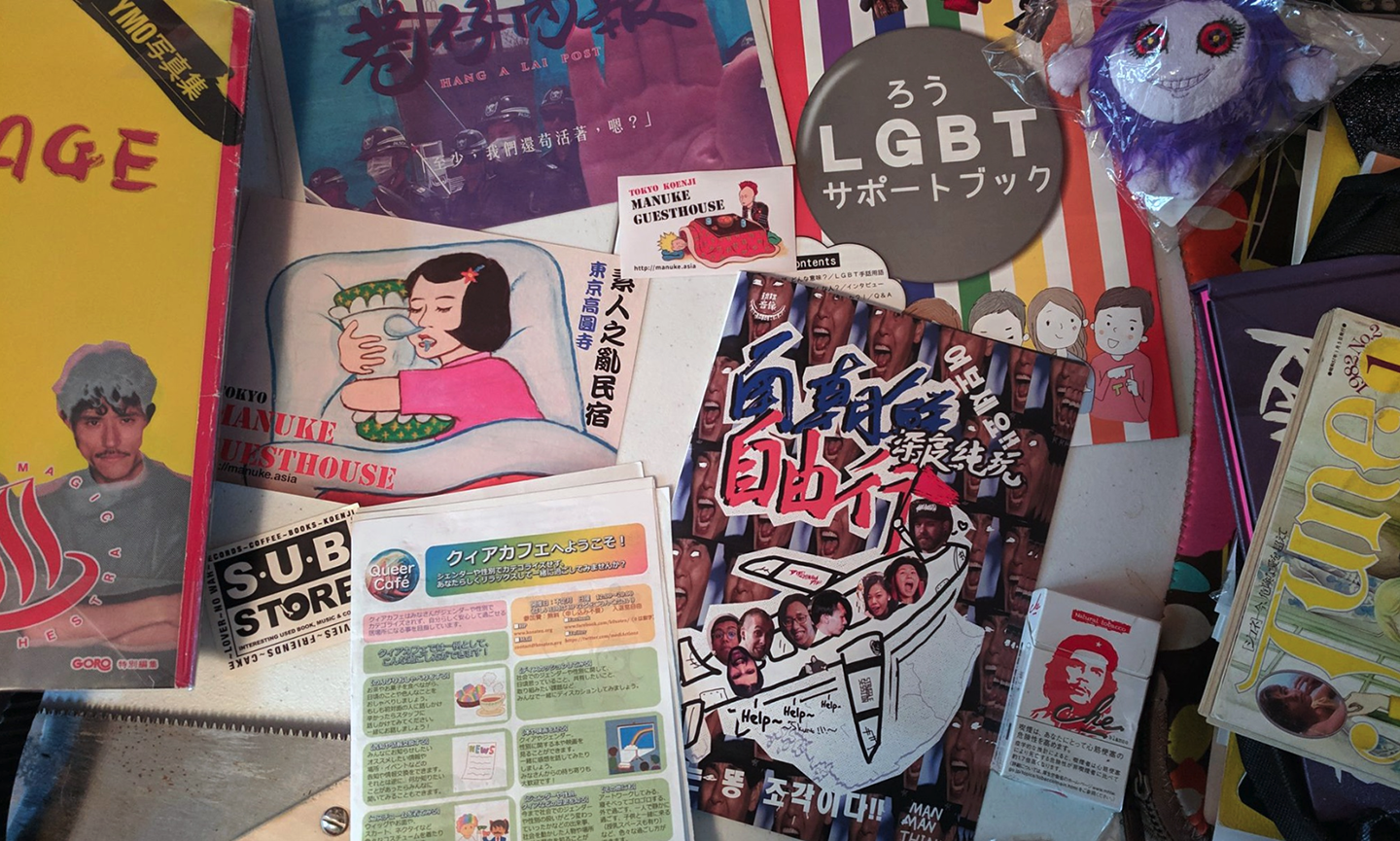

Printed matter produced by Amateur Riot. Image by Art & Labor.
Treating Zomia as not only a place but a concept, I suggest that a form of “zomia” can also be cultivated in urban space, as evidenced by Amateur Riot’s work in Koenji and beyond. This might seem surprising given that Zomia’s relative self-governance is enabled by its altitude and remoteness. However, urban terrain, while often a locus of state power, is also a composite of cracks and fissures with the capacity to evade certain forms of state control. In this light, Amateur Riot’s community in Koenji can be thought of as a “para-zomia,” where a diverse economic and social mesh creates another site of topographic resistance. Indeed, the urban conditions of Koenji can produce a sense of removal from the state and an intersectional self-governance akin to that of Zomia.
Koenji’s winding passageways and dense housing engender a close relationship between neighbors and a different set of relations to those promoted by urban capitalism. As Hajime writes in Amateur Riot’s DIY-book-cum-manifesto Counter-Attack of the Poor:
I want to devise a means of creating a space where it is easy to make a life in the broadest sense, encompassing personal connections and the local area. This is an area-wide, self-sufficiency strategy for all the poor. Wow! To put it another way, if we can devise an amazing fools’ area in which places of work, of play and housing are lumped together, then we wouldn’t have any reason to be afraid.13
The reflexive humor of a “fools’ area” underscores the lightness of Amateur Riot’s approach, but it does not detract from the group’s serious intent to establish a generative ecology that combines collective social reproduction with cultural practices. The development of this para-zomia has not been a top-down plan but rather an ad hoc collective project based on the needs and desires of economic refugees from neoliberal precarity. The physical spaces of Koenji’s small shops and cultural sites, networked to provide mutual support and cooperation, have reestablished a sense of enduring community in the area, as evidenced by Amateur Riot’s continuing fifteen-year existence. This para-zomia was founded with and through artistic and cultural practices. Art and music are not byproducts of the community, but rather its connective tissue. This living ecology has provided fertile terrain for a new generation of artists, cultural workers, and collectives to emerge in the area.
Curiously, the para-zomia in Koenji has not given rise to the sort of gentrification seen in other metropolises. This is because Tokyo does not have the kind of centralized development planning used in, for example, New York.14 In Tokyo, there is not a trend of renovating dilapidated buildings; instead, home and apartment prices are generally fixed according to the year of their construction, and these prices typically depreciate over time. This means that in Tokyo, it is new buildings—in particular large-scale apartment towers—that are the generators of gentrification, as was the case with Mori Tower in Roppongi and the recent construction of tech office towers around Shibuya.15 Large building corporations, facilitated by local municipalities, raze entire areas for large-scale new developments. By contrast, the living ecology produced by Amateur Riot has not led to rising rents or the displacement of longtime residents in Koenji. Instead, Amateur Riot has sought to band with these residents. The group enrolled in the long-standing local committee of neighborhood shopkeepers, and also helped contest a 2018 plan to construct a major thoroughfare through Koenji, which would have bisected the neighborhood and disrupted its intimate network of alleyways.16 Amateur Riot has also organized an annual protest in Koenji, which channels the collective agency of residents who dislike the heavy-handed planning approach of the larger municipal authority. The group fights to preserve the dense, Zomia-like character of the neighborhood against top-down forces of capitalist homogenization.
Using a prefigurative approach, Amateur Riot has developed collective material and cultural practices that counter precarity and foster an alternative economy in the Koenji. This para-zomia includes spaces for cultural experimentation, mutual support, and community building. The urban ecology of Koenji offers a model for a fundamentally different way of life.
Yet the mining of coal and its ongoing displacement has not ended in Germany. See Ingmar Björn Nolting, “The Eviction of Lützerath: The Village Being Destroyed for a Coal Mine,” The Guardian January 24, 2023 →.
Rather than seeing neoliberalism as a set of economic policies aiming to separate markets and capital from democratic governance, theorist Wendy Brown argues that neoliberalism is itself a “rationality.” Brown, In the Ruins of Neoliberalism: The Rise of Antidemocratic Politics in the West (Columbia University Press, 2019), 21.
See Julia Obinger, “Aufstand Der Amateure!: Alternative Lebensstile Als Aktivismus in Urbanen Räumen Japans” (PhD diss., University of Zurich, 2013), 49.
Alexander James Brown, Anti-Nuclear Protest in Post-Fukushima Tokyo: Power Struggles (Routledge, 2018), 56.
Matsumoto Hajime, interview by Magazine9, 2007 → (in Japanese).
Matsumoto Hajime and Amateur Riot, interview by Jason Waite, trans. by Kenji Kubota, March 21, 2017.
Julia Lesser and Clarissa Seidel, Radioactivists: Protest in Japan after Fukushima (Ginger and Blonde Productions, 2011).
Matsumoto Hajime, Binbōnin daihanran: Ikinikui yo no naka to tanoshiku tatakau hōhō (The great pauper rebellion: How to struggle against a hard world while having fun) (Asupekuto, 2008). Quoted and translated in Carl Cassegård, Youth Movements, Trauma and Alternative Space in Contemporary Japan (Global Oriental, 2014), 108.
Alexander James Brown has undertaken a study of the term “prefigurative politics” in Japan, including the critical role of Sabu Kohso’s translation of the term as “yojiteki seiki” in 2006 and its subsequent usage. Brown, “Translating Prefigurative Politics: Social Networks and Rhetorical Strategies in the Alter-Globalisation Movement,” The Translator, April 15, 2020.
Willem van Schendel, “Geographies of Knowing, Geographies of Ignorance: Jumping Scale in Southeast Asia,” Environment and Planning D: Society and Space 20, no. 6 (December 2002); Arkotong Longkumer and Michael Heneise, “The Highlander,” The Highlander: Journal of Highland Asia 1, no. 1 (December 21, 2019).
James C. Scott, The Art of Not Being Governed: An Anarchist History of Upland Southeast Asia (Yale University Press, 2009), 26.
Hakim Bey, T.A.Z: The Temporary Autonomous Zone, Ontological Anarchy, Poetic Terrorism, 2nd rev. ed (Autonomedia, 2003).
Matsumoto Hajime, Binbōnin No Gyakushū: Tada de Ikiru Hōhō (Counter-Attack of the poor: How to live for free) (Chikuma shobō, 2008), 56. Translated in Brown, Anti-Nuclear Protest in Post-Fukushima Tokyo, 91.
Ralph Lützeler, “Population Increase and ‘New-Build Gentrification’ in Central Tōkyō,” Erdkunde 62, no. 4 (December 2008).
Roman A. Cybriwsky, Roppongi Crossing: The Demise of a Tokyo Nightclub District and the Reshaping of a Global City (University of Georgia Press, 2011); Munehisa Ishida, “The Changing Face of Shibuya: Renewal Speeds up Shift from Cultural Center to IT Hub,” The Mainichi, January 7, 2020 →.
William Andrew, “Residents and Activists Protest Proposed Kōenji Gentrification Plan,” Throw Out Your Books (blog), September 25, 2018 →.
